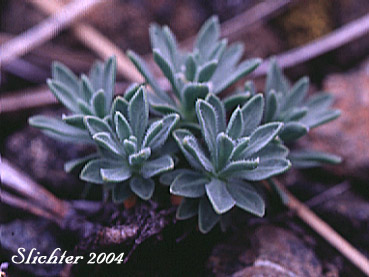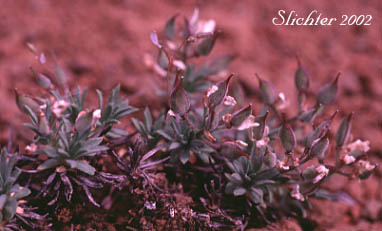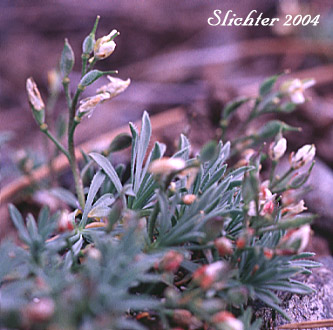 The photo at right
shows a close-up of the grayish-blue-green tufts of basal leaves of Douglas' Draba.
note the ciliated leaf margins. Photographed on Blue Ridge in the Malheur NF........May
25, 2003.
The photo at right
shows a close-up of the grayish-blue-green tufts of basal leaves of Douglas' Draba.
note the ciliated leaf margins. Photographed on Blue Ridge in the Malheur NF........May
25, 2003.
Also known as Douglas' whitlow-grass, Douglas' Draba is a low, matted perennial with short stems from 1-2 cm high, the stems covered with old leaves at the base. The leaves and stems are often covered with simple to forked hairs which may give plants a gray to blue-green cast. Individual leaves are thick, leathery, and rigid, the earlier leaves spatulate and 5-7 mm long and the later oblanceolate in shape and up to 14 mm long. They are somewhat concave above with a stout midrib. The margins are entire and often a fringe of hairs.
The racemes are 2-10 flowered. The flowers are white with four petals from 4-6 mm long. The fruits are somewhat inflated silicles which are ovoid, leathery and 3-7 mm long. They are covered with short simple hairs.
Douglas' Draba may be found on open rocky ridges and buttes among sagebrush and grasses from the lowlands to lower elevations in the mountains.
Douglas' Draba may be found from south-central Washington to central and southeastern (Steens Mt.) Oregon, and south to central Nevada.

